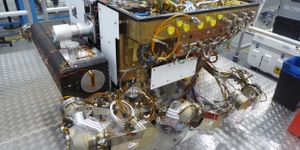The Compass in Their Eyes-How Migratory Birds Navigate
Quantum mechanics does not just rule the realm of physics, many biological processes that involve the conversion and transportation of energy (such as photosynthesis) are quantum mechanical in nature.
Scientists have been puzzled about how migratory birds navigate their routes of migrations. Even though plenty of evidence pointed toward the Earth’s magnetic field as the possible guiding system for these seasonal travelers, there seemed to a lack of consensus on how the birds are able to perceive the invisible field.
In the early 2000s, researchers narrowed down the possibilities where the birds’ magnetoreceptive sensor could be. It was found that migratory birds can use a compass-like sensory mechanism in their eye for navigation, more specifically a certain protein that can sense the difference in lights during flight, which help the brain to plot the differential information into a travel plan. In a way, the protein acts like the magnetic needle in a compass. The focus of the hypothesis was on a class of magnetoreception proteins known as cryptochromes. But no one knows which variation of this protein can do the job.
Cryptochromes exist in many plants and animal species and they are responsible for regulating the circadian rhythm and telling the body whether it is night or daytime. There are four subtypes of cryptochromes found in the retina of several bird species.
According to a report published in the journal Current Biology this February, one of subtype known as Cry4 played an important role in helping migratory birds navigate. When light hits these type of cryptochromes in the eye of a migrating bird, they undergo chemical reactions that are influenced by the direction of Earth's magnetic field, providing a signal of the bird's orientation.
Source: Seeker via Youtube








